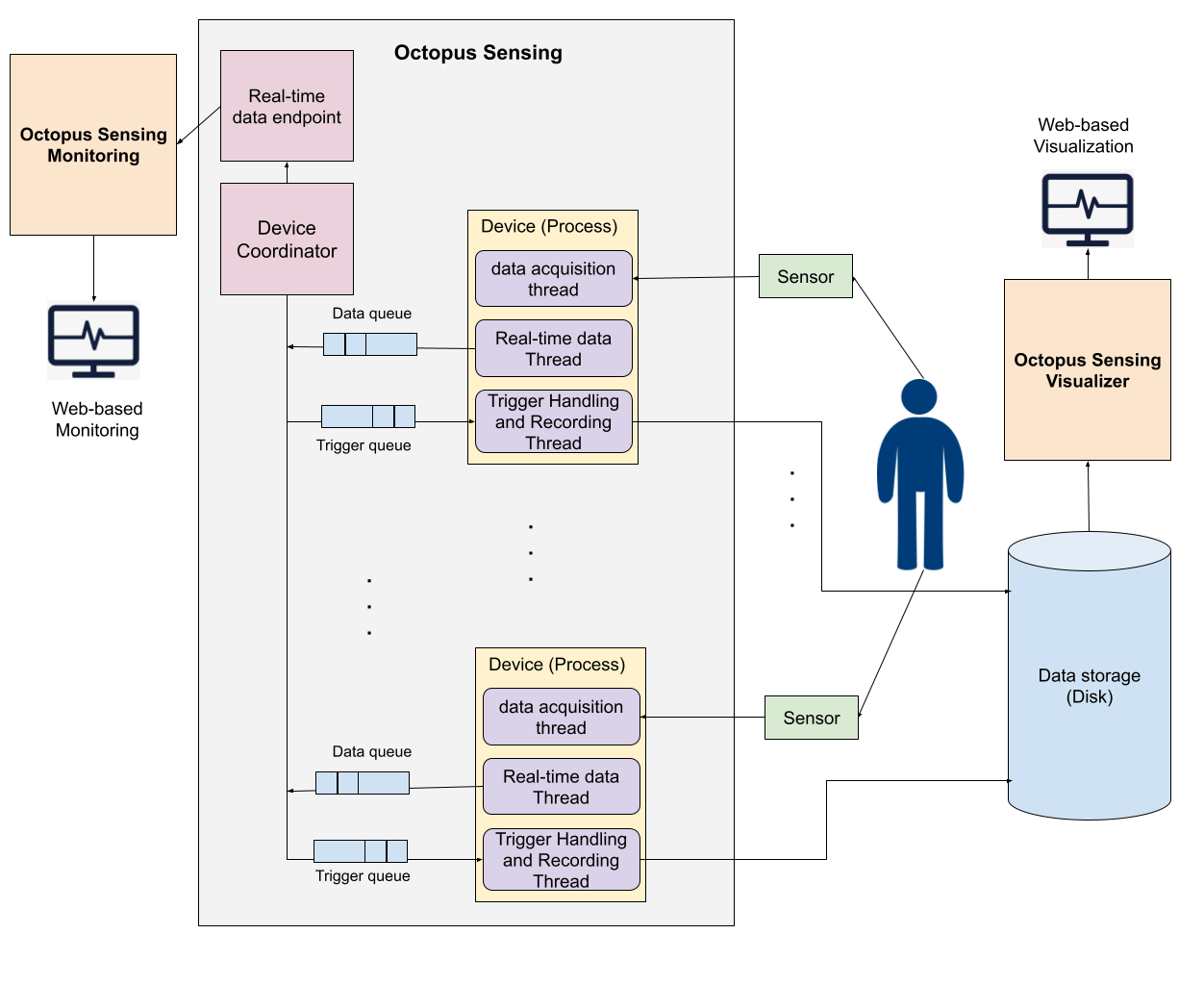
Octopus Sensing
Welcome to Octopus Sensing’s documentation!
Octopus Sensing is a tool to help you run scientific experiments that involve recording data synchronously from multiple sources in human-computer interaction studies. You write steps of an experiment scenario, for example showing a stimulus and then a questionnaire. The tool takes care of the rest.
It can collect data from multiple devices such as OpenBCI EEG headset, Shimmer sensor (GSR and PPG), Video and Audio and so forth simultaneously. Data collection can be started and stopped synchronously across all devices. Collected data will be tagged with the timestamp of the start and stop of the experiment, the ID of the experiment, etc.
The aim is to make the scripting interface so simple that people with minimum or no software development skills can define experiment scenarios with no effort. Also, this tool can be used as the base structure for creating real-time data processing systems like systems with capabilities of recognizing emotions, stress, cognitive load, or analyzing human behaviors.
Main features
Controls data recording from multiple sources using a simple unified interface
Tags an event on collected data, such as the start of an experiment, and events during the experiment, etc.
Can show stimuli (images and videos) and questionnaires
Monitoring interface that visualizes collected data in real-time
Offline visualization of data from multiple sources simultaneously

Quick Start
See Quick start to learn how to install Octopus Sensing.
Tutorial
See Tutorial to learn how to use Octopus Sensing.
API Reference
See API Reference for the complete documentation of all the public classes and methods available in Octopus Sensing.
Contribution Guideline
See Contribution Guideline to learn how to contribute to the Octopus Sensing.
Support
Please contact Nastaran (nsaffar@gmail.com) or Aidin (aidin@aidinhut.com) if you have any questions or seek support.
Citation:
Saffaryazdi, N., Gharibnavaz, A., & Billinghurst, M. (2022). Octopus Sensing: A Python library for human behavior studies. Journal of Open Source Software, 7(71), 4045.
Copyright
Copyright © 2020-2022 Nastaran Saffaryazdi, Aidin Gharibnavaz
This program is free software: you can redistribute it and/or modify it under the terms of the GNU General Public License as published by the Free Software Foundation, either version 3 of the License, or (at your option) any later version.
See License file for full terms.
Content
.
- Quick start
- Tutorial
- What Are We Building?
- 1- Record data from various sources synchronously
- 2- Synchronization with other software
- 3- Receiving Messages over Network
- 4- Use various kinds of stimuli in octopus-sensing
- 5- Utilities for designing experiments
- 6- Monitoring
- 7- Reading recorded data in real-time
- 8- Preprocess and visualize data offline
- 9- Watching video scenario
- API Reference
- Contribution Guideline
- Development
- Octopus Sensing Visualizer
- Octopus Sensing Monitoring